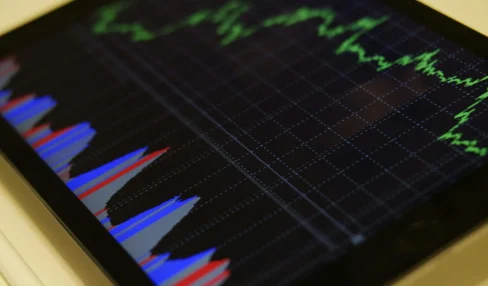Market Making And Crypto Exchanges: A Symbiotic Relationship
4 Mins Read
Published on: 08 January 2024
Last Updated on: 16 September 2024

The symbiotic relationship between market makers and crypto exchanges plays a critical role in ensuring the stability of digital asset markets.
This article covers this interdependence, highlighting the vital function of market makers in enhancing exchange functionality. It also ensures the seamless operation of the crypto ecosystem.
So, without further ado, let’s begin this comprehensive guide…
The Importance Of Liquidity For Crypto Exchanges
Liquidity, the lifeblood of any financial market, refers to the ease with which an asset can be bought or sold without causing a significant price movement. In the context of cryptocurrency exchanges, liquidity is paramount.
High liquidity benefits users by providing better price discovery, lower spread (the difference between the buy and sell prices), and the ability to execute large orders without significant price slippage.
Conversely, low liquidity can lead to higher volatility, less efficient markets, and a reduced ability to transact large volumes. It has no impact on the market prices.
How Market Makers Support Exchange Operations

Market makers, as liquidity providers for exchanges, play a crucial role in cryptocurrency exchanges. It enhances price stability, improves trade efficiency, and boosts overall market confidence.
Their continuous buying and selling activities help to stabilize prices, preventing drastic fluctuations that can occur in less liquid markets. They also narrow the bid-ask spread, making it cheaper and faster for traders to execute orders.
This, in turn, creates a more inviting trading environment, attracting a wider range of participants and fostering a healthier, more robust market. Essentially, market makers ensure a smooth, efficient, and reliable trading experience in the crypto world.
Case Studies Of Exchanges Benefiting From Market Makers

Several cryptocurrency exchanges have reaped the benefits of partnering with market makers. For instance, the WhiteBIT Market Making Program illustrates the crypto exchange market-making relationship. It also shows how crypto exchanges incentivize and support market makers.
Furthermore, this program offers collocation services for reduced network latency and subaccounts for managing different trading strategies. Thereby promoting a flexible API for integrating trading algorithms.
The program provides VIP support for personalized assistance and offers rebates based on trading volumes. Market makers are required to maintain a certain volume of trades to qualify, with rebates adjusting according to their monthly trading volume.
This program exemplifies how exchanges like WhiteBIT attract and sustain market makers, ensuring continuous liquidity and efficient market operations.
Incentives And Rewards For Market Makers

Exchanges deploy a strategic array of incentives and support mechanisms for market makers. Each one of them is tailored to resonate with their unique needs.
At the forefront of these strategies is the nuanced reduction of trading fees. This approach acknowledges the fine margins on which market makers operate, presenting an enticing proposition to enhance their profitability while engaging in high-frequency trading.
Further amplifying this allure are direct financial rewards, astutely linked to the market makers’ performance metrics. This performance-based remuneration model aligns the market makers’ efforts with the flourishing state of the exchange, fostering a continuous flow of liquidity and stability within the market.
Recognizing the technology-driven nature of market making, exchanges also extend comprehensive technical support. This includes providing state-of-the-art trading tools, low-latency trading environments, and reliable API support.
All these are essential components for the sophisticated algorithmic strategies employed by market makers. Such technological backing not only draws market makers to the platform but also equips them with the necessary arsenal. These execute their strategies with precision.
Lastly, exchanges go beyond standardized approaches by crafting bespoke contractual arrangements. These tailor-made agreements offer unique provisions and privileges, addressing the specific demands and strategies of market makers.
This customized approach underlines the exchange’s commitment to building an exchange-market maker collaboration with market makers.
The Future Of Exchange-Market Maker Collaborations

Looking ahead, the partnership between market makers and crypto exchanges is poised to grow even more integral. With the advent of new technologies and trading strategies, market makers are evolving.
They now employ sophisticated algorithms and artificial intelligence to enhance their operations. Additionally, as the cryptocurrency market matures, regulatory frameworks are expected to develop, potentially impacting the dynamics of market making.
The rise of decentralized finance (DeFi) platforms and the increasing popularity of Decentralized exchanges (DEXs) also present new opportunities and challenges for market makers. Adapting to these decentralized environments requires innovation in liquidity provision strategies.
The Bottom Line
In conclusion, the relationship between market makers and cryptocurrency exchanges is fundamentally collaborative. Each party plays a crucial role in the prosperity and stability of the digital asset markets.
As the cryptocurrency landscape continues to grow and develop, the future of exchange-market maker partnerships will undoubtedly remain a cornerstone.
With that, it’s a wrap on this comprehensive guide. Do not forget to share your thoughts in the comment box below. Thank you for reading!
Read Also:



















Comments Are Closed For This Article